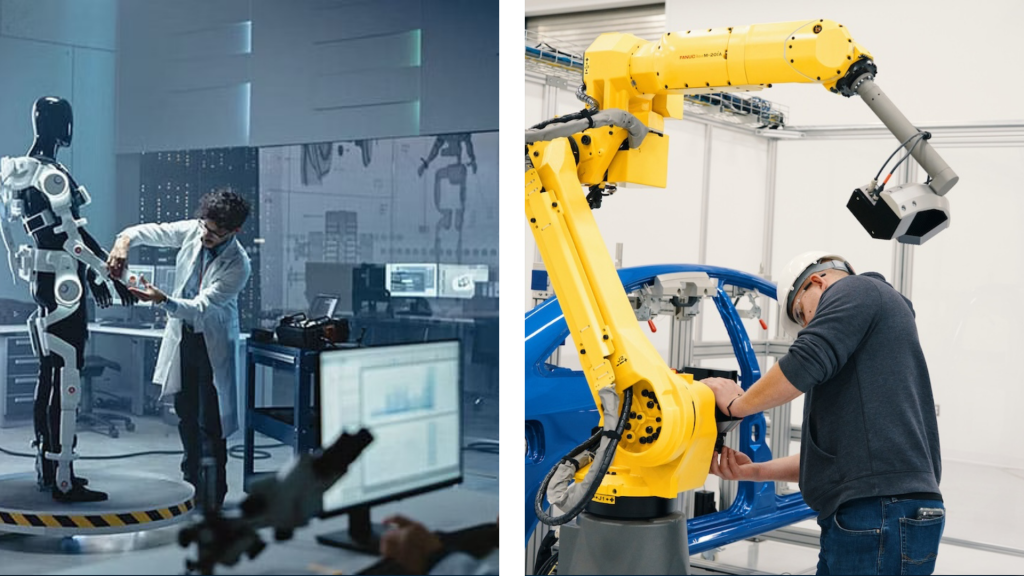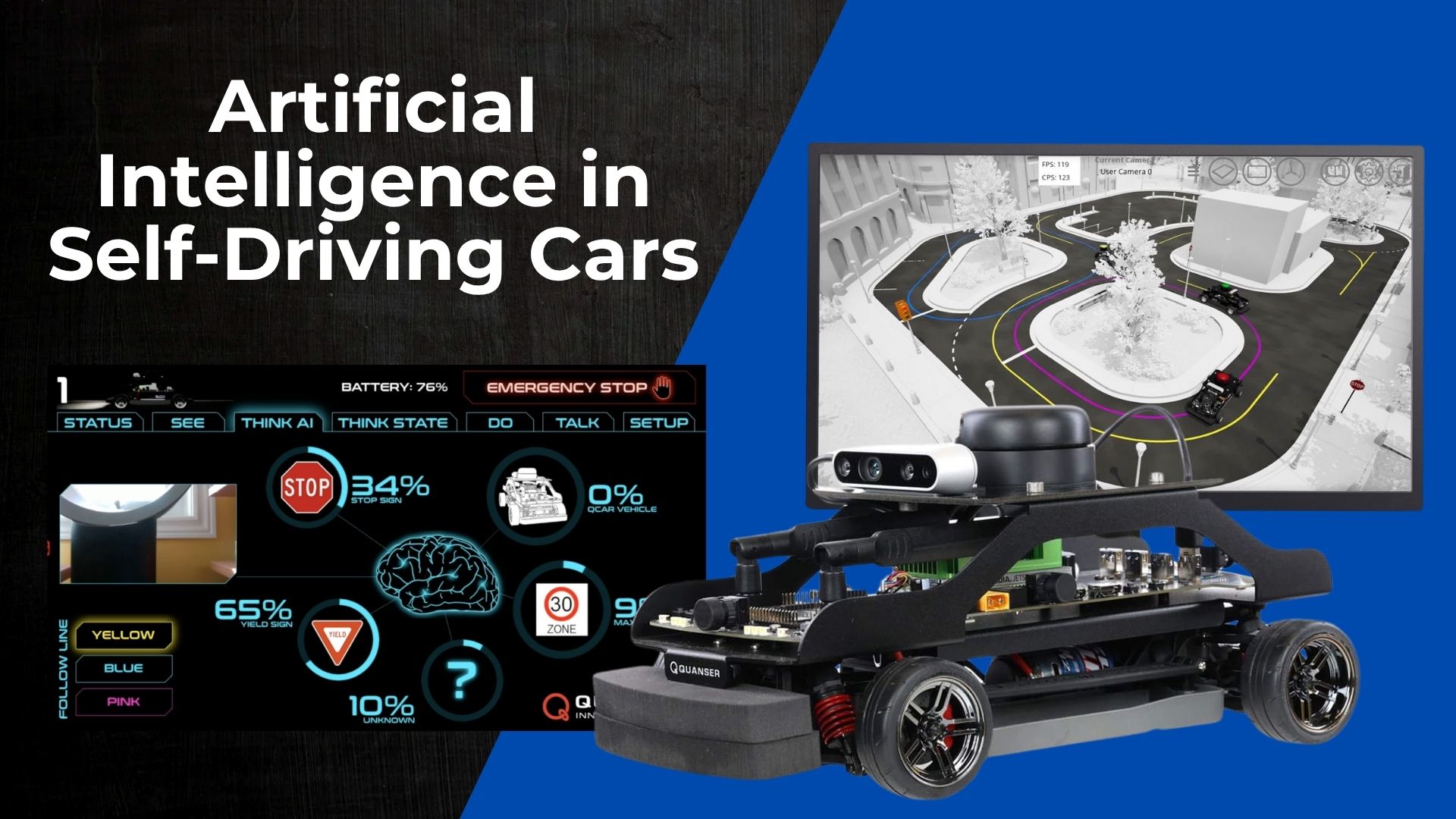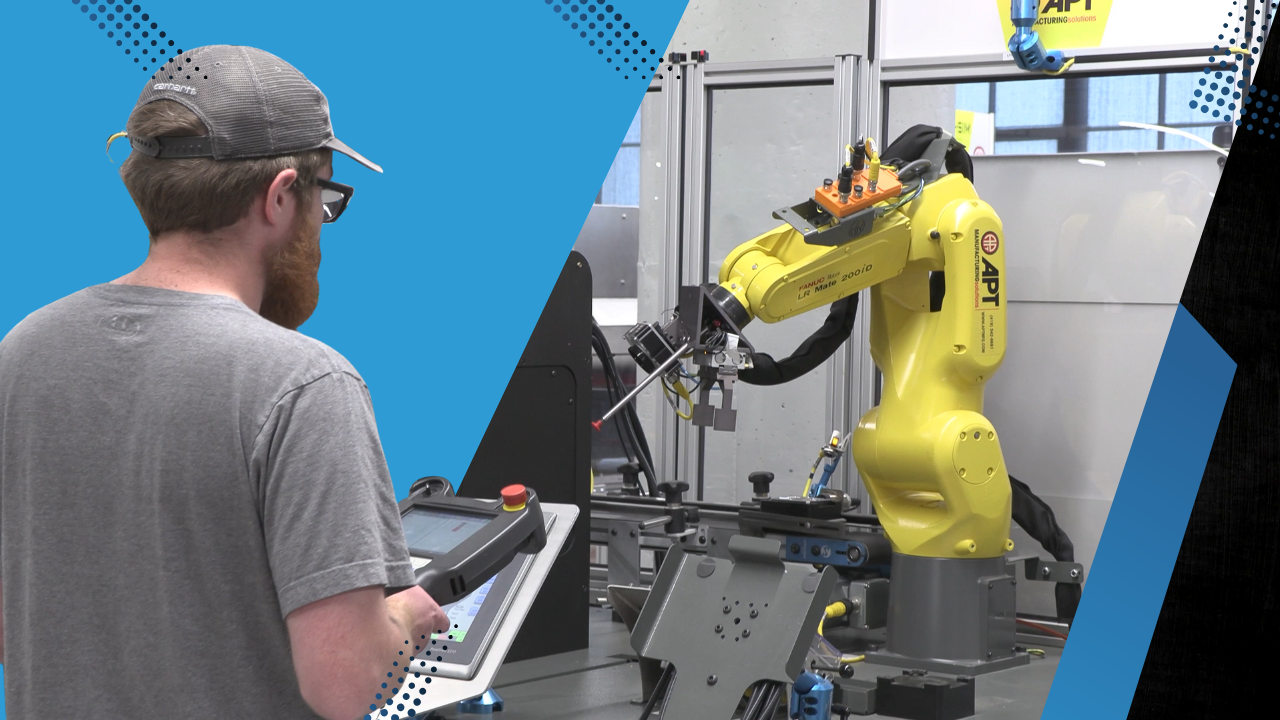
The Technology Educator’s Guide to 3D Scanning
From engineering classrooms to art preservation labs, 3D scanning has become an essential tool in technical and post-secondary education. By
Watch any FIRST Robotics team during competition season, and you’ll see students deep in code, fabricating parts, and problem-solving like pros. Programs like FIRST Robotics and VEX have done an incredible job of engaging students in STEM, giving them early exposure to engineering design, coding, and teamwork. These competitions are often the spark that launches a student’s passion for robotics.
But while these programs mirror the work of robotics engineers, they represent only one side of the robotics world.
In the workforce, robots aren’t just being designed—they’re being deployed. Industrial robots are welding cars, picking and packing goods, tending CNC machines, and working side-by-side with people in nearly every major industry. And behind each of those robots is a team of technicians, operators, and integrators keeping them running. These are high-tech, high-paying jobs—and they don’t all require a four-year degree.
For educators, this means one thing: it’s time to expand how we think about robotics education. That means offering not just after-school clubs and competitions, but also hands-on training with real industrial robots and clear pathways into both engineering and technician careers. The future of robotics is bigger than any one robot—it’s a diverse, growing workforce. And schools have a vital role to play in preparing students for it.

These are the people researching, designing and building new robotic systems. They often work for robot manufacturers, R&D labs, or high-tech firms to develop the next generation of robots. In the U.S., there are roughly 15,000 robotics engineers employed and growing about 9% annually. Robotics engineers almost always need a college degree in fields like mechanical, electrical, or computer engineering (and sometimes advanced degrees). Robotics engineers tend to have higher education levels: about 65% hold a bachelor’s degree and another ~13% a master’s. This path is suited for students who excel in engineering design, math, and programming.
These are the “inventors” of robots. The ones developing the next Tesla Optimus, Boston Dynamics Spot, or Agility Robotics Digit. When you compare apples to apples, the experience a student has in programs like FIRST or Vex are very similar to the robotics engineer roles.
But what about all the other roles in robotics that often get forgotten?
The majority of robotics-related jobs have to do with programming, running and integrating the 4.2 million+ industrial robots across the world that make, move, weld, pack and ship nearly every product you interact with every day. Robotics technicians install, program, troubleshoot, and repair industrial robots and automated systems on the factory floor. They are the skilled tradespeople who keep robots running.
These are the jobs that get to work alongside some of the most impressive and innovative technology being deployed in manufacturing, logistics, agriculture, defense, automotive and many other industries. The ones operating the huge yellow robots that can lift several tons and are featured in commercials building cars autonomously. The ones sending autonomous mobile robots on missions to retrieve packages from shelves in Amazon warehouses and bring them to the truck. The ones programming a cobot to perform a perfect weld.
These are the jobs that comprise the majority of robotics careers, and they’re well-suited to hands-on learners who love robotics but aren’t looking to become an engineer.
Robotics leagues and competitions can spark interest in STEM pathways for students of all ages. FIRST, perhaps the most well-known robot building competition globally, has fantastic programs including FIRST LEGO League, FIRST Tech Challenge, and FIRST Robotics Competition. These programs can engage students from pre-kindergarten through high school.
So how do we bridge the gap from high school to post-secondary robotics education, or from competition-style robotics to industrial robotics? That’s where schools have an opportunity to expand their robotics offerings beyond the extracurriculars.
Students who dream of inventing the next humanoid helper or advanced robotic system should build a strong foundation in engineering and computer science. Here’s what an education pathway for a robotics engineer might look like:
Most schools use FIRST as an after-school club, so future roboticists typically focus on math, computer science, physics and engineering courses. However, the more exposure a student can get to authentic industrial robots, the better context they’ll have for building the next generation of robots. For example, schools can adopt FANUC’s Certified Education Robot Training (CERT) program to teach students on real industrial robots. Through the CERT program, a school gets the same robotic hardware and software used in industry, along with teacher training and an industry-vetted curriculum, so students as young as 14–18 can learn to program an actual 6-axis robot arm in a safe setting. Early exposure to industrial robots not only builds skills but also allows students to earn industry-recognized credentials (FANUC and NOCTI offer certifications for robot operators that many high schoolers are now attaining). All of this gives aspiring engineers a head start.
Nearly all robotics engineer roles will require a college degree. After high school, students should enroll in a four-year engineering program – common majors are mechanical engineering, electrical engineering, computer engineering, or specialized robotics/mechatronics engineering. These programs provide advanced math, physics, and engineering coursework, and often include hands-on projects or research in robotics. Most robotics engineers have at least a bachelor’s degree (around 65% earn a B.S.), and many go on to earn graduate degrees as well. Universities may also offer extracurricular robotics teams or labs that mimic real R&D environments. By the time students graduate with an engineering degree, they are prepared to design and build robotic systems from the ground up.
An alternative education route is the “2+2” pathway: start with a two-year associate degree in a field like automation, robotics technology, or mechatronics at a community or technical college, then transfer into a university engineering program for the remaining two years. This approach can be beneficial for hands-on learners. The initial two-year program focuses on practical skills – students work with PLCs, wiring, sensors, and often actual robot arms in a lab setting – giving them concrete experience with industrial robotics and system integration (more details on that below). Then, transferring into a bachelor’s program provides the theoretical engineering depth. There are students who intentionally combine a technical college degree with a mechanical or electrical engineering degree to become well-rounded robotics engineers. Educators can facilitate articulation agreements to make this transition seamless. The result is an engineer who not only understands the theory behind robotics but also has considerable practical know-how with the technology used in the field.
Not every student interested in robotics wants to be an engineer – many love the hands-on aspect of working with robots and automated machines directly. For these learners, the education pathway is more focused on technical skills, trades, and certifications rather than lengthy academic study. A typical pathway for a robotics technician (or programmer/operator) could include the following:
Schools should offer career and technical education (CTE) programs in automation, mechatronics, or industrial technology. In such classes, students get to program real robots or work on industry-grade equipment rather than just hobby kits. For instance, a high school might install a small FANUC LR Mate robot on a CERT training cart for students to learn pick-and-place programming. By doing so, students can even earn FANUC’s national Robot Operator certification while in high school – these certifications (developed by FANUC and NOCTI) validate that a student can operate and program an industrial robot at an entry-level standard. Likewise, schools are introducing Industry 4.0 certifications from organizations like SACA. SACA’s Certified Industry 4.0 Associate – Robot System Operations credential is designed so that high school or college students can achieve a “Silver” certification (online exam) or even a hands-on “Gold” certification to prove their robotic operating skills . Earning credentials from SACA or NOCTI shows employers that a graduating senior has practical know-how with robotics and automation systems. In some cases, students with these skills and certifications can step directly into the workforce after high school, landing apprenticeship or trainee positions as robotics technicians.
Many students will benefit from continuing their education at a two-year college, such as a community or technical college that offers programs in robotics, automation, industrial maintenance, or advanced manufacturing. In a two-year Associate of Applied Science (AAS) program, they will dive deeper into the technology: learning to integrate robotic cells, troubleshoot automated production lines, and program the ancillary equipment that works alongside robots (like PLCs, conveyor systems, machine vision, and pneumatic devices). These programs are very hands-on. Colleges often have state-of-the-art training systems to simulate real industrial environments.
For example, a college might use an integrated robotics training cell where a FANUC robot is paired with a CNC machine tool to teach robotic machine tending – one such educational system is APT Manufacturing’s MTEC cell, which combines a FANUC robot with a Levil CNC mill so students learn to program the robot to load/unload parts and interface with the CNC controls. Colleges may also have welding robot trainers (blending a robotic arm with welding equipment) to teach robotic welding, or even full automated manufacturing lines. APT’s larger Connected Smart Manufacturing (CSM) line is an example of a scaled-down factory with multiple robots and smart conveyors that students can learn on. By the end of a two-year program, students will have had extensive practice in programming, operating, and troubleshooting complex automation systems.
With a high school technical background plus an associate degree or certifications, a student is well-prepared to become a robotics technician in the workforce. They might start out as an automation technician, robotics maintenance specialist, or junior programmer on a manufacturing line. Thanks to the rise of automation across industries, these “middle-skill” robotics jobs are in demand and pay excellent wages. In fact, the median annual salary for robotics and automation technicians in the U.S. is about $65,000 (as of 2023) – and that can increase substantially with experience or additional skills. Technicians can continue accumulating certifications as they work. Some may later pursue further education or a degree, but it’s not required to have a successful career. The key is that their education has given them marketable skills: they know how to keep robots running, integrate new automated equipment, and solve practical problems on the factory floor. This is exactly what employers are looking for in the era of Industry 4.0.
For educators and students, the takeaway is clear: not every robotics career involves being a PhD roboticist at a big tech company. There is a huge realm of “middle-skill” robotics careers that are lucrative and vital. A school that proudly runs a FIRST Robotics team is fostering creativity and engineering design, which is fantastic for aspiring engineers. But that same school could also introduce programs to train robotics technicians and operators. Those programs would prepare students for the other side of the robotics workforce, where far more jobs exist. These jobs can pay extremely well (often rivaling or exceeding entry-level salaries for college grads) and do not require accumulating student debt for a four-year degree . By broadening robotics education to include both engineering and technical tracks, schools can set up all their students for success in the coming era of automation.
LAB Midwest can help bring industrial robotics programs to your school! Contact us to get started.

From engineering classrooms to art preservation labs, 3D scanning has become an essential tool in technical and post-secondary education. By

On a Tuesday morning in Phoenix, a visitor on business orders an Uber to take them to a conference, and

On the edge of downtown Waterloo, Iowa, there’s a historic site where the first John Deere tractor factory changed the